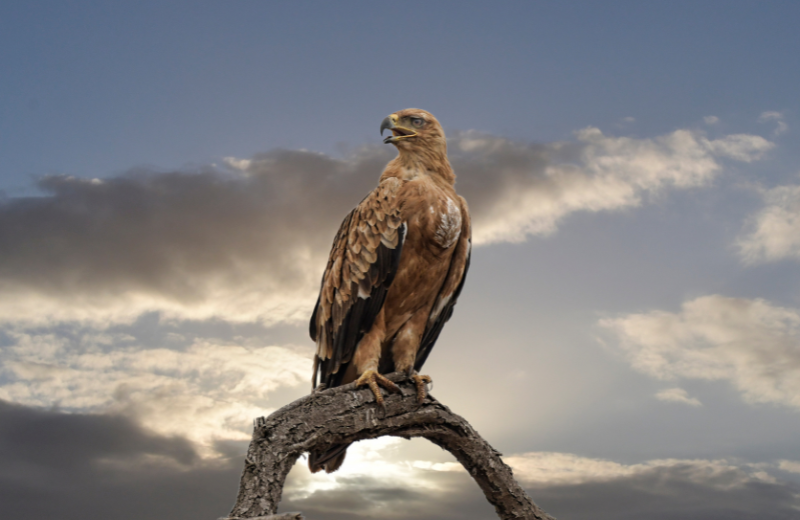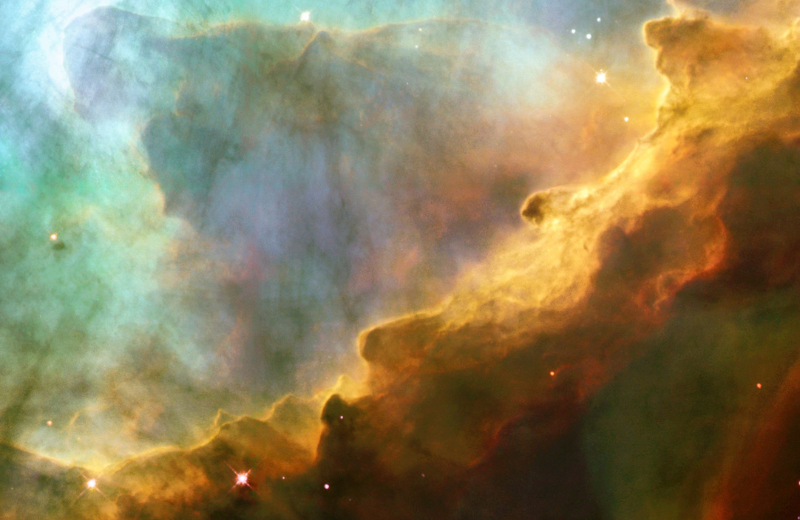Known as the 'Eagle' constellation, Aquila is rich in history, mythology, and astronomical significance. This guide shares everything from the constellation's brightest star to its ancient mythological ties, as well as how to spot it in the sky.
Jump to:
- What is the Aquila Constellation?
- What Does the Constellation Aquila Represent?
- What Does Aquila Look Like?
- How Far is the Aquila Constellation from Earth?
- The Aquila Constellation Myth
- Aquila's Stars
- Nebulae in the Aquila Constellation
- Finding Aquila in the Sky
- Fun Facts About Aquila
- Study Astronomy for £29
Recommended for you!
Best SellersWhat is the Aquila Constellation?
The Aquila constellation, whose name means 'eagle' in Latin, is one of the 48 constellations listed by the Greek astronomer Ptolemy in the second century. Its name was inspired by the bird that Zeus, the king of the gods, often sent on missions in Greek mythology. This majestic constellation is located along the celestial equator, making it visible from both the northern and southern hemispheres. The constellation Aquila is relatively easy to spot in the summer skies and is known for its distinctive star pattern, resembling a bird in flight.
What Does the Constellation Aquila Represent?

In Greek mythology, Aquila represents the eagle of Zeus, often associated with the bird carrying Zeus's thunderbolts. The constellation has a powerful symbolism, embodying strength, courage, and freedom. Many cultures have associated Aquila with eagles, symbolising lofty aspirations and the connection between the earth and sky. Spiritually, the constellation is often seen as a reminder to rise above challenges and view life from a broader perspective, much like an eagle soaring through the sky.
What Does Aquila Look Like?
Aquila's shape resembles an eagle in mid-flight, with outstretched wings. Its brightest star, Altair, marks the eagle's head, while other stars outline the wings and body. Altair, which is one of the closest visible stars to Earth, is part of the 'Summer Triangle,' a prominent asterism in the northern hemisphere's summer sky. Two other stars, Deneb and Vega, complete this triangle. The distinct placement of Altair makes it relatively easy to identify Aquila once you know what to look for.
How Far is the Aquila Constellation from Earth?
The stars in the Aquila constellation are various distances from Earth. Altair, the brightest star in Aquila, is relatively close, located just 16.7 light-years away from us. This proximity is part of what makes Altair so bright and easily visible to the naked eye. The other stars in the constellation are much farther, with distances ranging up to hundreds of light-years.
The Aquila Constellation Myth

Aquila plays a significant role in Greek mythology. According to legend, Aquila was the faithful eagle of Zeus. One of its most famous tasks was to carry Ganymede, a young boy of extraordinary beauty, to Mount Olympus, where he became the cupbearer to the gods. This myth intertwines with the constellation's symbolic representation of loyalty and service to higher powers. The eagle, soaring high above the Earth, also symbolises the divine messenger between the heavens and mankind.
Aquila's Stars
The Aquila constellation is home to several notable stars that form the shape of the eagle in the night sky:
- Altair (Alpha Aquilae): Altair is the brightest star in the Aquila constellation and one of the closest stars visible to the naked eye, located only 16.7 light-years from Earth. Altair is part of the famous Summer Triangle asterism and is known for its incredibly fast rotation, completing a full rotation in under 10 hours. Its name, derived from the Arabic word for "flying eagle," perfectly reflects its place in this majestic constellation.
- Tarazed (Gamma Aquilae): Tarazed is a giant star located around 460 light-years from Earth. This star marks the back of the eagle and is easily spotted due to its brightness and orange hue. Tarazed plays an essential role in forming the eagle’s shape in the sky.
- Alshain (Beta Aquilae): Positioned close to Altair, Alshain marks the eagle’s neck. It’s a subgiant star located around 44 light-years away, and though it is less bright than Altair, it helps to complete the distinctive outline of Aquila in the night sky.
Nebulae in the Aquila Constellation

Beyond its stars, Aquila is home to several deep-sky objects, including nebulae. One of the most famous is the Omega Nebula, also known as the Swan Nebula or Messier 17. This bright, diffuse nebula lies at the edge of the constellation and is a stellar nursery where new stars are being born.
The Aquila constellation also hosts the Eagle Nebula, a stunning region of star formation. Its iconic "Pillars of Creation" image, taken by the Hubble Space Telescope, showcases towering columns of gas and dust where stars are forming, reinforcing the idea of the eagle as a symbol of strength and rebirth.
Finding Aquila in the Sky
Aquila is best viewed during the summer months, especially from July to September in the northern hemisphere. During this period, the constellation is at its highest point in the sky, making it easier to spot and enjoy.
Locating Aquila
To locate Aquila, start by finding the Summer Triangle, a prominent feature of the northern hemisphere's summer sky. The three stars that form this triangle are Altair, Vega, and Deneb, with Altair being the key to finding Aquila. Altair, the brightest star in Aquila, forms the lower point of the Summer Triangle. Once you’ve identified Altair, you can easily trace the other stars that form Aquila's wings and body.
If you're in the southern hemisphere, Aquila is also visible, though it will appear upside down compared to its view from the north.
Viewing Aquila with Binoculars or a Telescope
- With binoculars: Altair and the surrounding stars will become clearer, and you’ll be able to spot more stars that outline the eagle’s wings. Binoculars are helpful in areas with light pollution, as they bring the constellation's fainter stars into view.
- With a telescope: You can explore some of Aquila’s deeper sky objects, such as nebulae. For example, the Eagle Nebula, located at the edge of Aquila, offers a stunning view of star formation and gas clouds.
Best Viewing Conditions
For optimal viewing, find a dark location away from city lights. A clear, moonless night will enhance your experience of stargazing. Once you locate Altair and the Summer Triangle, the rest of Aquila will come into focus, allowing you to appreciate its majestic form in the night sky.
Recommended for you!
Best SellersFun Facts About Aquila
- Altair’s speed: Altair is one of the fastest rotating stars visible to the naked eye, spinning at 286 km per second. This speed causes the star to bulge at its equator, giving it an oblate shape.
- Eagle symbolism: Throughout history, eagles have been regarded in various cultures as symbols of strength, courage, and freedom, making Aquila one of the most symbolically rich constellations.
- Mythological connections: The eagle is not only linked to Zeus in Greek mythology but also plays roles in Roman, Native American, and Sumerian stories, where it symbolises everything from divine protection to the soul’s ascent to the heavens.
Study Astronomy for £29
If the Aquila constellation has sparked your curiosity, why not explore more about the stars and the cosmos with our Astronomy Diploma Course at Centre of Excellence? This course offers a detailed understanding of the universe, from constellations and star types to the fundamentals of space observation. Perfect for all budding astronomers, the course is available for a discounted price of £29.













